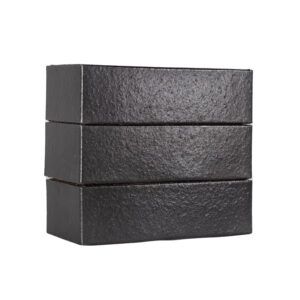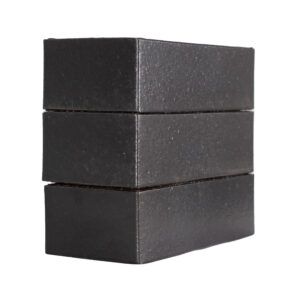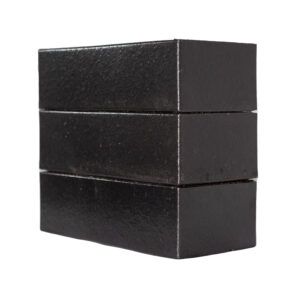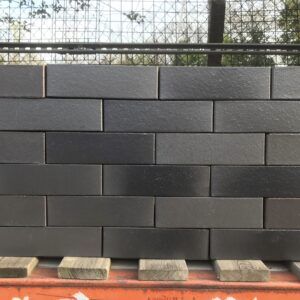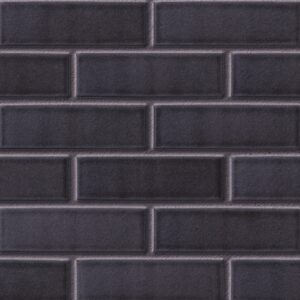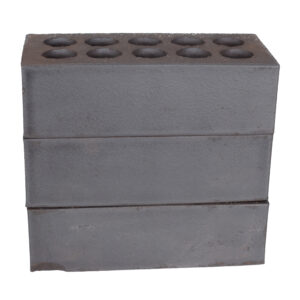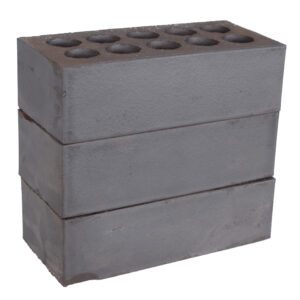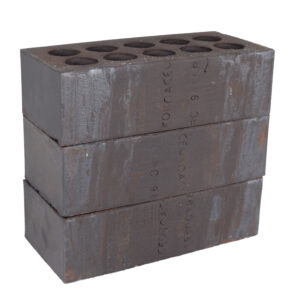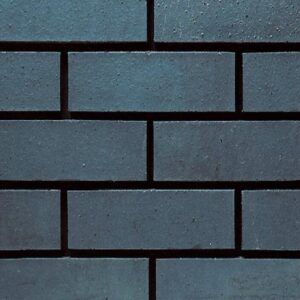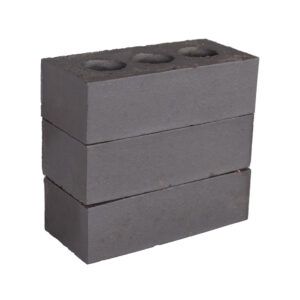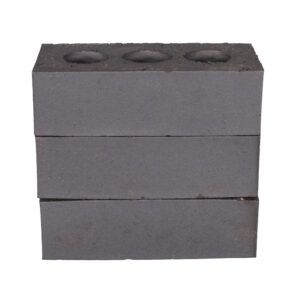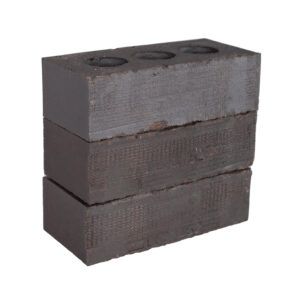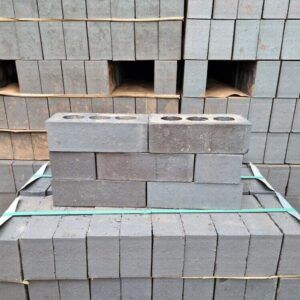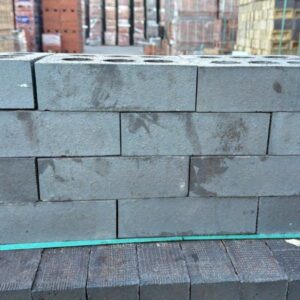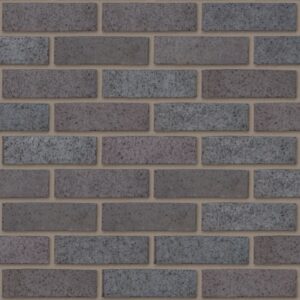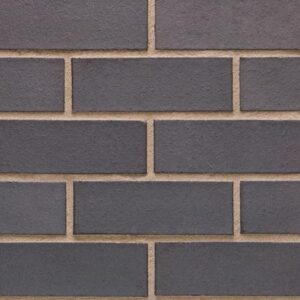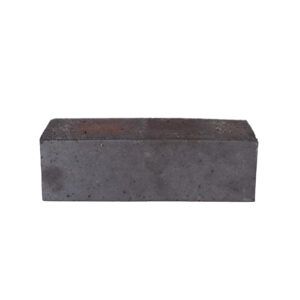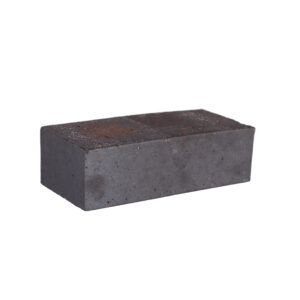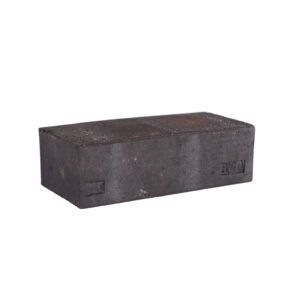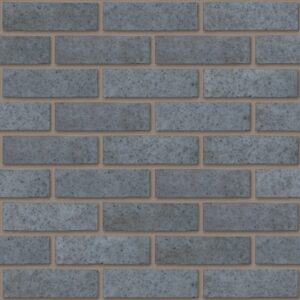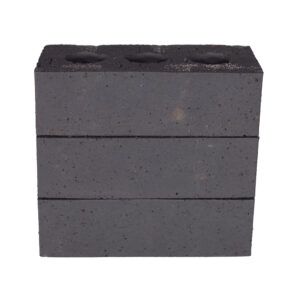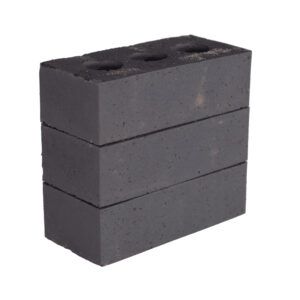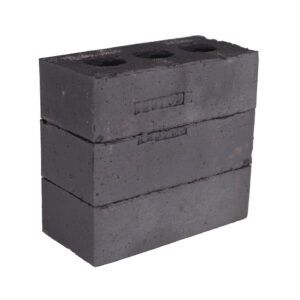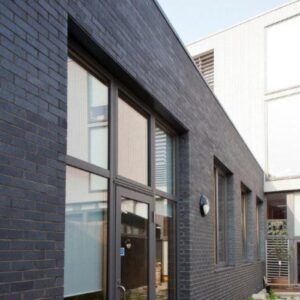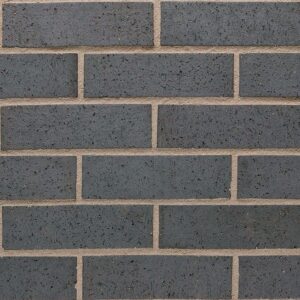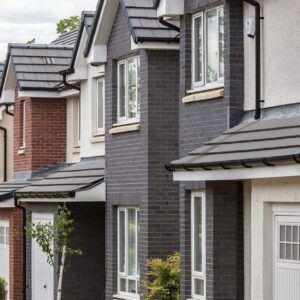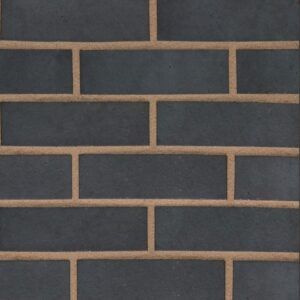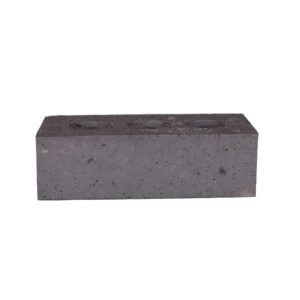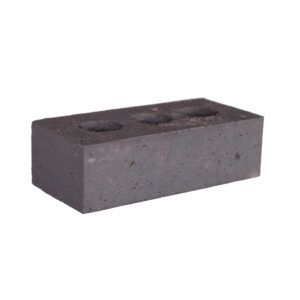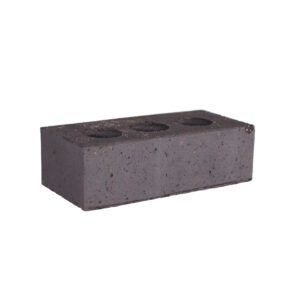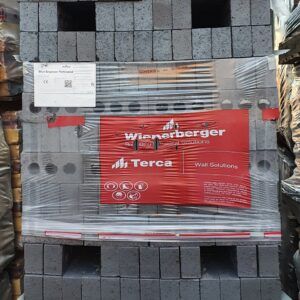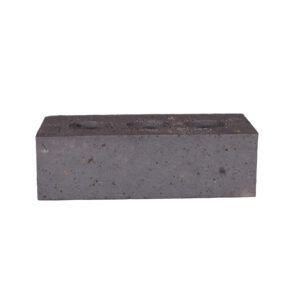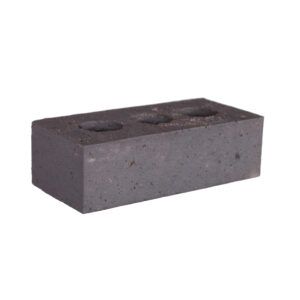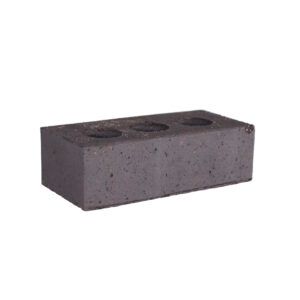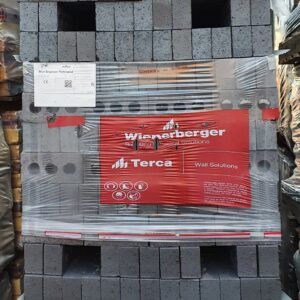Blue Bricks
Blue bricks, especially blue engineering bricks and blue facing bricks, are a mainstay in construction. Architects and contractors choose them for their unique colour, moisture resistance, and durable structure.
This unique finish makes them a statement piece on exteriors and a bulwark in damp-prone areas.
Key Features of Blue Bricks
Blue bricks are usually Class B (and A in some cases), with a compressive strength of ≥ 75 N/mm², less than 7% water absorption, and F2 frost rating according to British standards. This makes them suitable for the moisture-laden, temperate UK climate.
A prime example of this in our catalogue is the Wienerberger K209 Class B Blue brick.
Most blue facing bricks, like the Staffordshire Smooth Blue from Wienerberger, follow standard UK sizes with T2/R1 tolerances for uniformity and ease of laying.
Due to the dramatic colour, they are ideal for use in visible areas and beautification.
Benefits of Blue Bricks
Durability and Longevity
The high compressive strength of blue wall bricks and the weather resistance of examples like the Ibstock Brunel Smooth Blue facing brick give homeowners and builders guaranteed lasting performance, even in exposed environments.
Cost-Effective
Blue brick prices can be slightly higher than those of more common brick types. However, this is offset by their resilience and value in the long run.
Aesthetic Appeal
Some of the deep blue bricks, like the Wienerberger K201 Staffordshire Smooth Blue, create a striking exterior that adds an imposing touch of sophistication.
Energy and Weather Efficiency
Most blue bricks are rated 6% to 7% on water absorption, meaning they withstand wet conditions, such as frost and rain, much better. This contributes to a home or building’s longevity.
Eco-Friendly Processing
Blue bricks come from natural clay and, like many of the items in our catalogue, are durable, recyclable, and environmentally sound.
What Are Blue Bricks Used For?
Blue bricks perform impressively across diverse applications. Some of the include:
- Structural uses– Owing to their strength and low moisture uptake, you’ll find blue bricks in foundations, retaining walls, DPCs (damp-proof courses), and sub-grade structures (blue engineering bricks).
- Industrial and civil engineering projects– Bricks like the Wienerberger K109 Class B Blue are perfect for exposed, corrosive environments. With blue engineering bricks, you can build yard structures to withstand the elements.
- Decoration– Blue facing bricks, with their unique colour, are often used to decorate facades, garden walls, caps, and paving.
Why Choose Our Blue Bricks?
Find blue bricks for sale at Brick Wholesale to support your next project. We offer competitive pricing and a diverse collection that serves many uses. The manufacturers and brand names, such as Ibstock and Wienerberger, are well-known for offering high-quality, consistent, and trusted bricks.
All projects, big and small, benefit from our bulk order pricing, fast and reliable delivery within the UK, and a robust supply chain.
CTA – For the discerning contractors and builders, our blue bricks collection presents reliable, stylish, and structurally sound options. Engineer without fear!
FAQs
Are blue bricks waterproof?
Blue engineering bricks are highly resistant, with water absorption as low as 4.5% (which puts them in Class A) or up to 7% (Class B). They are nearly impervious to moisture and are often used in damp-prone sites.
How do I clean blue bricks?
To clean them, use special-purpose masonry cleaners or a diluted mild detergent. Do not use harsh acids. If you are trying to get rid of paint or cement stains, soft brushing and remediation cleaners will do the job.
Why are engineering bricks blue?
It all comes down to the type of clay and the firing technique. The kiln is designed to burn with a reduced atmosphere, which causes the iron in the clay to vitrify and become a distinct shade of blue. It also makes the brick very strong.
How are blue bricks made?
Blue bricks are produced by firing clay at high temperatures in reducing atmospheres. This causes vitrification, producing a low-porosity, dense brick with high compressive strength and that highly noticeable colour.
Showing all 13 results
-
ET Clay Windermere Blue 65mm Wirecut Facing Brick Pack of 468
The Windermere Blue brick is a perforated, wirecut facing brick, imported from the EU, it is dark grey / blue in colour with a smooth texture. With its specifications, it can be used as an engineering brick.
£420.38£504.46 Ex VATInc VAT£0.90£1.08 Per Brick Add to cart -
Ibstock Brunel Blue Smooth Wirecut Facing Brick Pack of 520
The Brunel Blue Smooth is a perforated, wirecut facing brick, manufactured by Ibstock, it is grey / blue in colour with a smooth texture.
£598.49£718.19 Ex VATInc VAT£1.15£1.38 Per Brick Add to cart -
Ibstock Class B Blue Perforated Engineering Brick Pack of 380
The Blue Engineering Class B brick made by Ibstock, is a perforated, wirecut brick that combines both high strength and low water absorption. Engineering bricks are specified for their physical characteristics and not their appearance. They have high compressive strength and low water absorption and are classified only by these properties. Their use for facing work should be avoided. Where aesthetic performance is a major consideration, facing bricks should be used.
£415.47£498.56 Ex VATInc VAT£1.09£1.31 Per Brick Add to cart -
Ibstock Class B Blue Solid Wirecut Engineering Brick Pack of 380
The Blue Engineering Class B brick made by Ibstock, is a solid, wirecut brick that combines both high strength and low water absorption. Engineering bricks are specified for their physical characteristics and not their appearance. They have high compressive strength and low water absorption and are classified only by these properties. Their use for facing work should be avoided. Where aesthetic performance is a major consideration, facing bricks should be used.
£603.35£724.02 Ex VATInc VAT£1.59£1.91 Per Brick Add to cart -
Buy in Bulk & Save
1-4 5-9 10+ £497.03£596.44 £484.60£581.52 £472.18£566.62 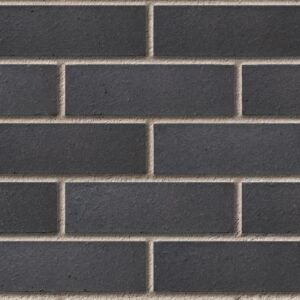 There are 2 more images
There are 2 more imagesIbstock Staffordshire Slate Blue Smooth Wirecut Facing Brick Pack of 380
The Staffordshire Slate Blue Smooth is a perforated, wirecut brick manufactured by Ibstock, it is grey / blue in colour with a smooth texture. With its specifications and water absorption being just 7% it can be used as a facing as well as an engineering brick.
£497.03£596.44 Ex VATInc VAT£1.31£1.57 Per Brick Add to cart -
Offshade Ibstock Class B Blue Perforated Engineering Brick Pack of 380
The Blue Engineering Class B brick made by Ibstock, is a perforated, wirecut brick that combines both high strength and low water absorption. Engineering bricks are specified for their physical characteristics and not their appearance. They have high compressive strength and low water absorption and are classified only by these properties. Their use for facing work should be avoided. Where aesthetic performance is a major consideration, facing bricks should be used.
£222.11£266.53 Ex VATInc VAT£0.58£0.70 Per Brick Add to cart -
Stock Clearance MBH PLC FLB Anthracite Stock Facing Brick Pack of 400
The FLB Anthracite brick, manufactured by Michelmersh, is stock, frogged facing brick that is anthracite in colour with slight blue hues and a light texture.
£328.90£394.68 Ex VATInc VAT£0.77£0.92 Per Brick Add to cart -
Wienerberger Granite Blue Dragfaced Wirecut Facing Brick Pack of 400
The Granite Blue Dragfaced brick, manufactured by Wienerberger, is a perforated, wirecut brick that is blue / multi in colour with a light texture. With its specifications and water absorption being just 7% it can be used as a facing as well as an engineering brick.
£563.54£676.25 Ex VATInc VAT£1.41£1.69 Per Brick Add to cart -
Wienerberger K109 Class B Blue 65mm Solid Wirecut Engineering Brick Pack of 400
The Blue Engineering Class B brick made by Wienerberger, is a solid, wirecut brick that combines both high strength and low water absorption. Engineering bricks are specified for their physical characteristics and not their appearance. They have high compressive strength and low water absorption and are classified only by these properties. Their use for facing work should be avoided. Where aesthetic performance is a major consideration, facing bricks should be used.
£572.26£686.71 Ex VATInc VAT£1.43£1.72 Per Brick Add to cart -
Wienerberger K201 Staffordshire Smooth Blue Perforated Wirecut Facing Brick Pack of 400
The K201 Staffordshire Smooth Blue brick from Wienerberger, is a perforated, wirecut facing brick that combines high strength, low water absorption of 7% and a pleasing face. It is a combination of engineering brick qualities with facing brick appearance. It is blue / dark grey in colour and a smooth texture.
£459.42£551.30 Ex VATInc VAT£1.15£1.38 Per Brick Add to cart -
Wienerberger K203 Staffordshire Blue Dragfaced Wirecut Facing Brick Pack of 400
The K203 Staffordshire Blue Dragfaced is a perforated, wirecut brick manufactured by Wienerberger, it is blue in colour with a light texture. With its specifications and water absorption being just 7% it can be used as a facing as well as an engineering brick.
£563.54£676.25 Ex VATInc VAT£1.41£1.69 Per Brick Add to cart -
Wienerberger K209 Class B Blue 65mm Perforated Wirecut Engineering Brick Pack of 400
The Blue Engineering Class B brick made by Wienerberger, is a perforated, wirecut brick that combines both high strength and low water absorption. Engineering bricks are specified for their physical characteristics and not their appearance. They have high compressive strength and low water absorption and are classified only by these properties. Their use for facing work should be avoided. Where aesthetic performance is a major consideration, facing bricks should be used.
£385.08£462.10 Ex VATInc VAT£0.96£1.15 Per Brick Add to cart -
Wienerberger K209 Class B Blue 73mm Perforated Wirecut Engineering Brick Pack of 368
The Blue Engineering Class B 73mm brick, manufactured by Wienerberger, is a perforated, wirecut brick that combines both high strength and low water absorption. Engineering bricks are specified for their physical characteristics and not their appearance. They have high compressive strength and low water absorption and are classified only by these properties. Their use for facing work should be avoided. Where aesthetic performance is a major consideration, facing bricks should be used.
£499.46£599.35 Ex VATInc VAT£1.36£1.63 Per Brick Add to cart

